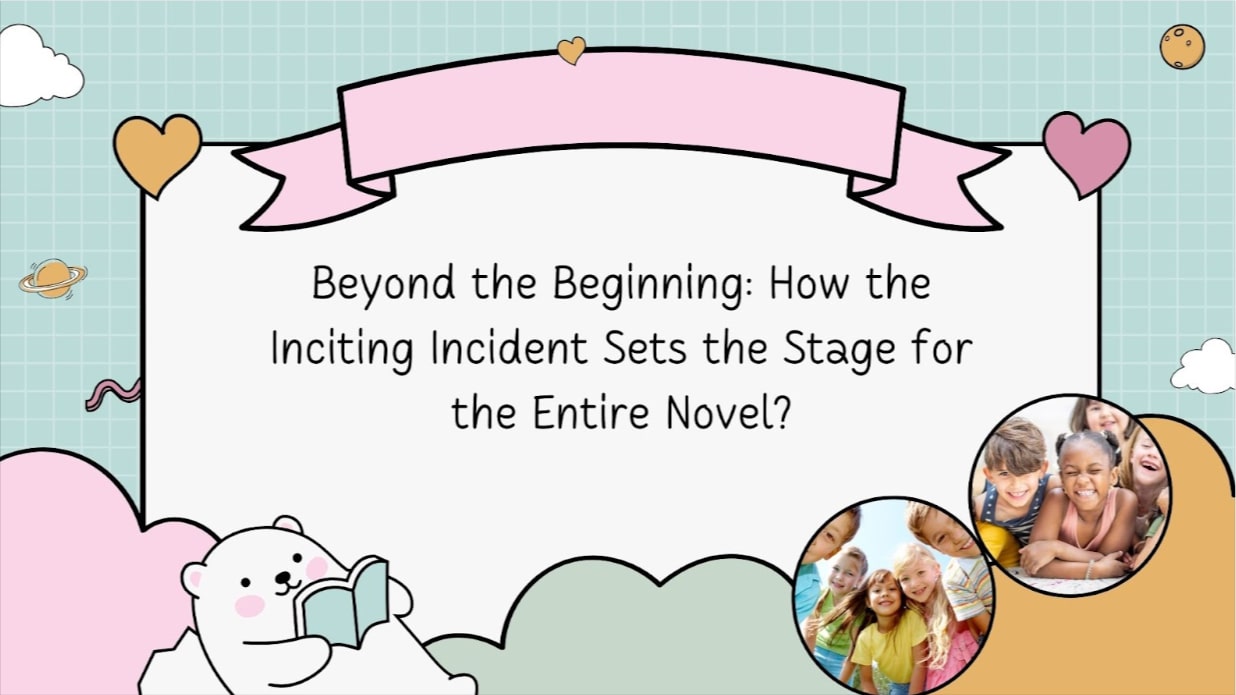
In the dynamic realm of storytelling, a pivotal element emerges-the “inciting incident”. Think of it as a cornerstone imbued with significant storytelling power. However, despite its paramount significance, it can often bewilder writers. Various individuals have differing notions regarding its definition and optimal placement within the narrative. This complexity turns it into a puzzle that demands unraveling. Let’s embark on an adventure to explore the multifaceted nature of the inciting incident and its role in linking the story’s inception to its core.
Visualize the inciting incident as a mystical spark that ignites the story’s engine. It’s a big moment that gets everything moving. Due to its inherent mystique, individuals often ponder its identity and placement. By dissecting its various components and understanding the linkage between a story’s initiation and its primary journey, we uncover its crucial role in creating captivating and thrilling narratives.
The Misunderstood Nature of the Inciting Event
What exactly is the inciting incident definition? The inciting incident holds a pivotal role in storytelling, although its manifestation varies between screenwriting and novels. In scripts, it’s often a sudden event that messes up the main character’s everyday life. But in books, people have different opinions. Some perceive it as the initial attention-grabber, while others argue it’s the primary plot point propelling the narrative forward. This amalgamation of viewpoints can bewilder authors.
Determining the optimal placement of the inciting incident within a novel is also a challenge. Some writers surprise readers early, while others build things up slowly before the critical event happens. This substantial shift can occur swiftly, akin to a surprise, or unfold gradually. By comprehending these diverse perspectives, writers can leverage the inciting incident in innovative ways to infuse their stories with excitement.
The Three Faces of the Inciting Event
The inciting incident, a pivotal concept in storytelling, manifests in various forms at the outset of a novel. This variety gives us a better look at how this important event shapes the story. It has the potential to captivate readers’ interest and ignite the central conflict, whether through a sudden revelation or a gradual unfolding. This assortment of utilization enriches stories and facilitates writers in forging connections with their readers.
The First Moment in the Story (The Hook)
This initial scene acts as a ‘hook,’ enticing readers into the narrative. It often introduces the protagonist and hints at the primary conflict they will confront. The hook’s job is not to turn the plot upside down, but to entice the audience and make them invest in the character’s journey. An engaging hook embedded with the inciting incident gives the story an impactful launch.
The First Plot Point
A Game-Changing Moment the first plot point is like a super important part of a story where something big happens, and everything gets exciting. It comes after the beginning part, where things are set up, and it takes the main character and the story in a new direction. Even if the main character isn’t wholly involved yet, this moment sets off a chain of events that shake things up in a big way.
Think of the first plot point as a story spark. It’s like a sudden surprise or an extensive choice that the main character has to deal with. This moment makes the story move faster and makes the main character face the coming big problem. It’s like a point where there’s no turning back, and it ensures the story keeps going in a way full of twists and turns. Observing the main character navigate this pivotal moment primes us for the impending excitement.
The First Act’s Turning Point (The True Inciting Event)
Now the central conflict is pushed to the forefront and presented to the protagonist for the first time. Their realization of the obstacle they must overcome marks the narrative’s shift from Act I to Act II. This version of the inciting incident radically alters the main character’s status quo and serves as the catalyst for their entire arc in the story circle.
Identifying which facet is at play helps position the inciting incident for maximum impact. While the hook introduces the conflict, the true inciting incident thrusts the protagonist into its midst and commits them fully to the journey ahead.
The Key Event: Bridging the Gap
The inciting incident often precedes the “key event” in a novel. This key event draws the protagonist from their everyday world into the main action of the story. It builds a bridge between the inciting incident and the central plotline.
For example, the inciting incident may be the discovery of a secret treasure map. The key event is then the protagonist’s decision to follow the map, pulling them into an epic quest. The map itself spurred nothing except curiosity until the choice set the story in motion.
This relationship shows why the inciting incident goes hand-in-hand with the events needed to land the protagonist in the thick of the plot. The inciting incident sparks change, while the key event drives the character to engage with that change.
Structuring the Beginning for Maximum Impact
Since the inciting incident influences the entire course of the story, its positioning and delivery are essential. Writers must find the right pace and placement in the opening act to establish the inciting incident firmly.
Rushing to the inciting incident too fast can overload the reader with information they haven’t anchored to anything yet. But a dragged-out start can cause impatience. The key is to recognize the story’s natural rhythm and align the inciting incident with optimal timing.
When executed effectively, the inciting incident focuses the narrative and propels it forward. It serves as an organizing mechanism that sets the stage for every event to come.
FAQs on the Inciting Incident
Why is there so much confusion about the placement of the Inciting Event?
Since the inciting incident functions differently across plot points and genres, universal placement rules are difficult to establish. The lack of agreement on where it belongs creates discrepancies. However, understanding its evolving roles enables clearer positioning.
How does the Inciting Event differ from the Hook or the First Plot Point?
The hook draws readers in, the First Plot Point turns the story, and the inciting incident ushers the protagonist into the central conflict. Despite overlaps, these elements have distinct purposes in engaging the audience and shaping the narrative arc.
Can a story have multiple Inciting Events, or is it strictly a singular moment?
While the First Plot Point and Turning Point are singular events, a story can implant smaller inciting incidents throughout the opening act. The key is distinguishing the definitive moment that irreversibly alters the protagonist’s world.
The Thread that Binds the Story
Like loose strings being drawn together to form a tapestry, the inciting incident pulls all the elements of the story into focus. As the catalyzing event for the character arc and central conflict, it bears significant responsibility. Yet when crafted thoughtfully, this critical component can elevate the entire narrative and give it purpose. The inciting incident is where the author grabs the reins and signals to readers, “The journey begins here.”



